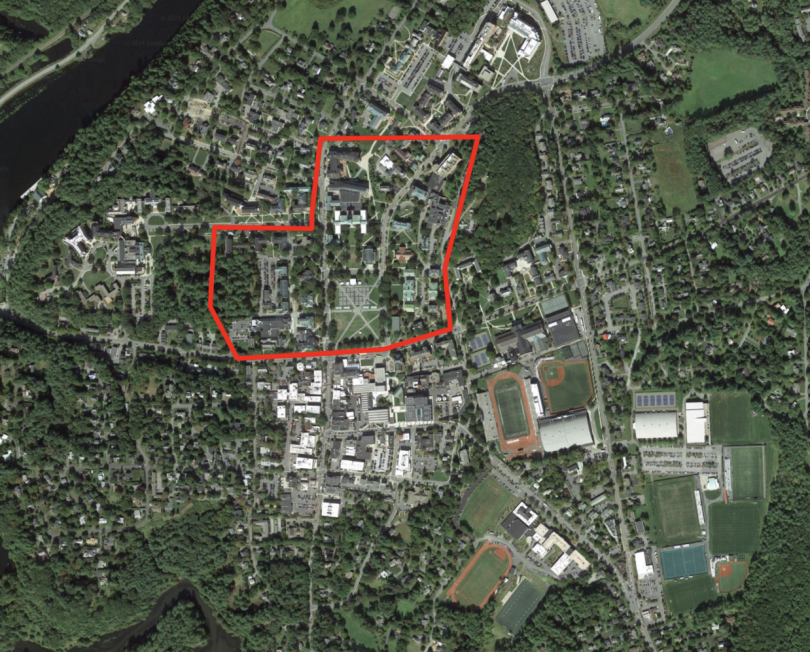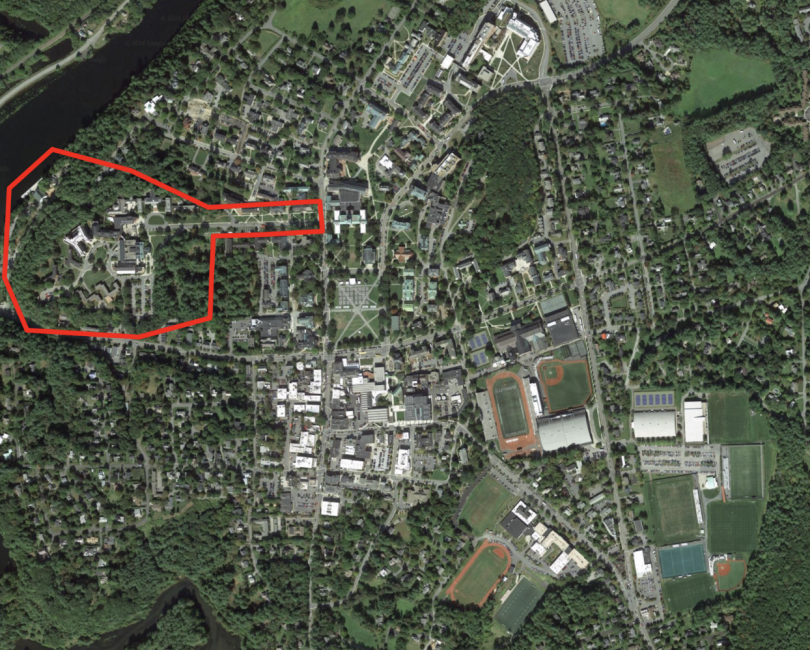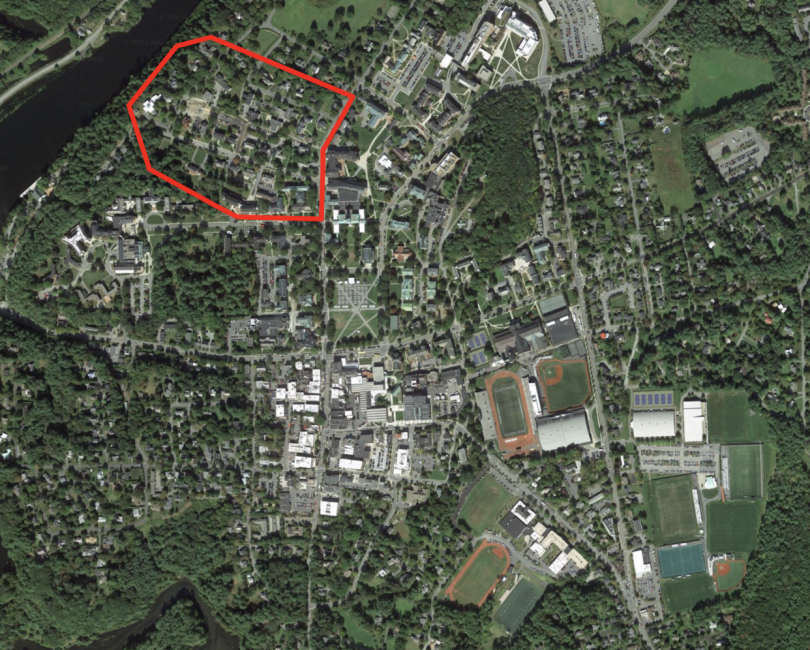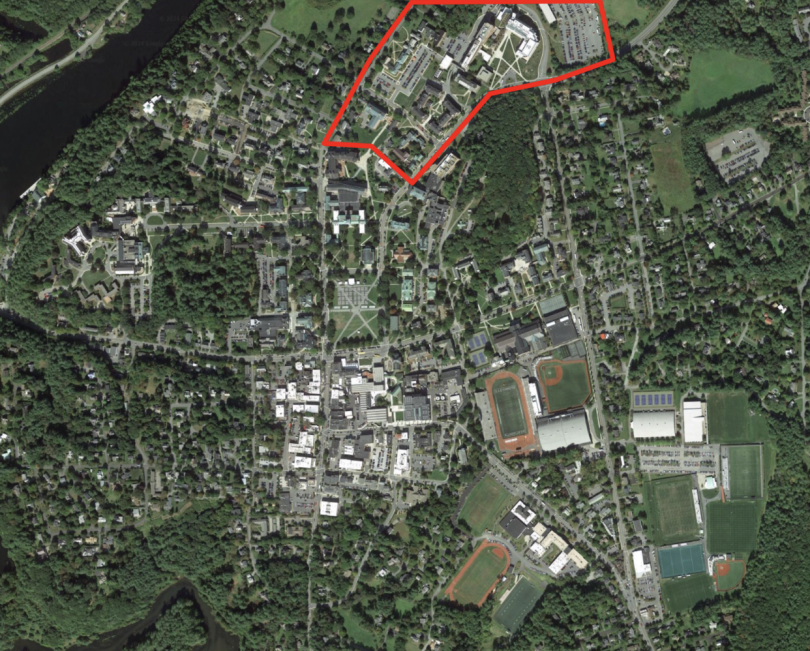
An Aerial Tour of Dartmouth's Campus
Central Campus
Starting in the heart of Dartmouth's campus, you'll find the iconic Baker Berry Library and The Green. These form the central hub of Dartmouth where students study, socialize, and generally spend their time. The Baker and Berry libraries form a conjoined building that offers multiple floors of workspaces and two café options ("Baker Cafe" and "Novack Cafe"). Surrounding this complex are clusters of colonial brick buildings, notably Dartmouth Hall (the original college and home of the language departments), Robinson Hall (housing the Dartmouth Outing Club and The Dartmouth), Sanborn Library (home of the English Department and a daily tea tradition), The Class of 1953 Commons (FOCO, the main dining hall), and various academic buildings. Central campus is ideal for its proximity to dining options, classes, and the gym. Housing includes Fayerweather dorms behind Dartmouth Hall and Massachusetts Row near FOCO.

West End
Moving west, the newest part of campus houses the Dartmouth Engineering, the Engineering and Computer Science Center (home to the Magnuson Center for Entrepreneurship, Cable Makerspace, and DALI Lab), the Irving Energy Institute (featuring an atrium and cafe called "The Fern"), and the Tuck School of Business. The River Cluster offers housing here, close to the Connecticut River, ideal for swimming at the docks and activities at the Ledyard Canoe Club, though commuting to central campus and FOCO can be inconvenient.

Webster Ave
Heading north, Webster Ave, also known as "Frat Row," is known for its Greek Life presence but also houses the President's House. A turn off the road leads to Occom Pond, popular for walks known as "Woccoms." The Choates, another dorm cluster, is another pocket of housing found in this region.

North Campus
North Campus is home to the Life Sciences Center (central to all things biology), Geisel School of Medicine (a place of labs and graduate students), and Anonymous Hall (officially the newest building and location of "Ramekin Cafe"). North Campus, most importantly, is the home of Dewey lot, where visitors and students park alike. If you come for a traditional campus visit chances are you'll be parked in Dewey lot for the majority of the day. Continuing the biomedical theme, North Campus contains Dick's House, which is where students go for healthcare-related needs (if you're sick, have a minor injury, or generally not feeling well). Yet another housing option, the Mclaughlin Cluster, is found in North Campus (my place of residence during my first year!).

Athletic District
While I could call it South Campus, this part of Dartmouth can be more accurately described as the place where all athletic facilities are located. Alumni Gym (where all students can go to workout), Memorial Field (a football stadium), and the Leverone Field House (an indoor track) are all in this zone (along with many other fields and buildings). I've also lumped North Park Road into this zone, which means housing options like the Wheelock Dorm Cluster and North Park Apartments fall into this region. Lastly, the East boundary does spill over into downtown Hanover, which is where the Hood Museum of Art and Hopkins Center are located. The building complex is a bit small to be deemed an "Arts District," so I've lumped it into the general area of the Athletic District. Maybe South Campus is a better term after all.

Downtown Hanover
Last but not least is downtown Hanover. There's a few Dartmouth locations here, including the Center for Professional Development, and as I mentioned, the Hood Museum of Art and Hopkins Center for the Arts. Hanover has a ton of food options that would be impossible to cover in the remainder of this already long blog post, so I suggest reading many of the Cafe reviews created by my fellow bloggers!

I hope this aerial overview of Dartmouth's campus gives you a clear spatial understanding! You can also check out the self guided virtual Google Maps tour!


















